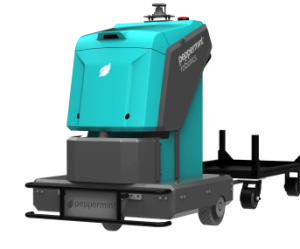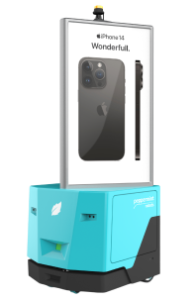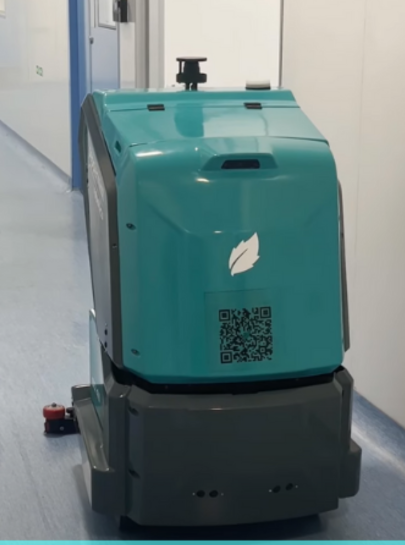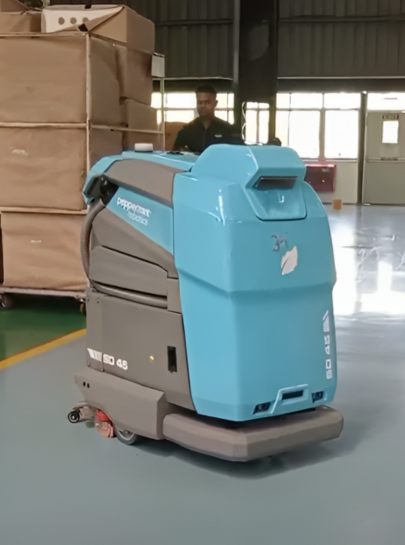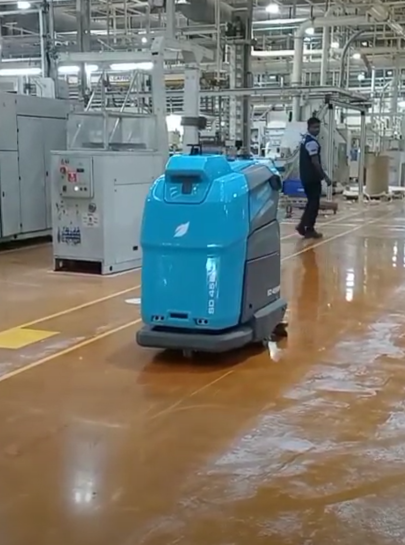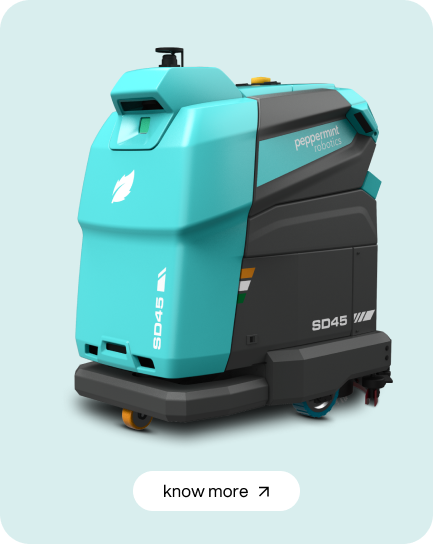Introduction: Why is Robotic Floor Cleaning Used in Pharmaceuticals?
The modern pharma industry has advanced over the years, and it is impossible to compare it to the pioneering apothecaries of the 1400s. Similar to other industries, the pharmaceutical industry needs to increase productivity due to rising product demand. Automation has emerged as the most effective means of doing this.
A suitable quality assurance system should be used while creating compounded medications. Cleaning and disinfection are crucial components of this system. As they prevent cross-contamination of preparations, lower bioburden levels in outputs, and protect staff employees from dangerous medication traces or toxic chemical exposure. Manual cleaning, though, is challenging to standardize.
To clean and disinfect pharmaceutical formulation facilities, automated robotic cleaning machines are created. Learn more about how to assess the appropriate use for these industrial cleaning robots, their programming needs, and the compatibility of the pharma industry and robot assistants. Read on to learn more about robotic cleaning & pharmaceuticals.
Use Case Scenarios of Robotic Floor Cleaning in the Pharma Industry
Scenario 1: Plan a cleaning operation for later
Employees in the pharma industry can clean multiple floors simultaneously with little oversight if the cleaning period is scheduled in advance. In addition to giving staff more time to do activities of greater importance, this prevents the robot from needing to be repeatedly programmed to perform the same duties.
Scenario 2: Lowering the likelihood of contamination
The efficacy of a batch of pharmaceuticals can be harmed by even a single particle getting into the mix. This might have an adverse effect on the product itself and raise the cost of re-manufacturing, as well as put the manufacturer in violation of legal regulations. By making use of a cleaning robot, the pharma industry can comply with the specific cleaning requirements in order to assure adherence.
Scenario 3: Obstacle-avoiding automation
The efficacy of a batch of pharmaceuticals can be harmed by even a single particle getting into the mix. This might have an adverse effect on the product itself and raise the cost of re-manufacturing, as well as put the manufacturer in violation of legal regulations. By making use of a cleaning robot, the pharma industry can comply with the specific cleaning requirements in order to assure adherence.
Scenario 4: Easy to handover
Anyone may use it due to its simple setup and user-friendly operator interface. It may be put into manual mode with a straightforward command. It is simple to put it back into automatic floor scrubbing mode when the manual scrubbing is finished. Thanks to a user-friendly touchscreen interface and the manual steering option, it is simple to use robotics in the pharma industry. It is suitable for a broad range of flooring materials and cleaning tasks due to its easy setup options.
Challenges faced with manual operations:
When robotic cleaning & pharmaceuticals are considered, there are a lot of difficulties that manual processes must overcome:
Human labor risks
The cleaning staff is sometimes unable to complete cleaning duties on time. Introduce an autonomous cleaning robot to help with part of the work to alleviate this issue and relieve the staff of the pressure of feeling like they still have endless unfinished work.
The physical demands of manual cleaning are taxing on the bodies of the cleaners. Numerous cleaning jobs result in repetitive strain injuries that might cause prolonged sick leaves. An autonomous cleaning robot might relieve staff of some demanding and laborious chores by lowering the risk of repetitive strain injuries.
Employee injuries can be a troublesome issue for companies. If an employee needs to take a sick leave because of an injury, the company faces both financial and operational risks. The company may benefit greatly from being relieved of this responsibility.
Problems with hiring and effective sanitation
Due to the low level of work motivation among cleaning staff, cleaning operations may occasionally result in inconsistent results. This presents issues for pharmaceutical enterprises, who cannot regularly trust the efficacy of the cleaning effort and periodically get complaints from facility users. In this case, a cleaning robot might be helpful as it would produce consistent results.
Employers who hire cleaning staff may have trouble filling all of their vacant positions. This is particularly troublesome for jobs that need seasonal outside cleaning since workers may perceive these kinds of cleaning activities to be fairly undesirable without year-round employment possibilities. By rethinking robotic cleaning & pharmaceuticals, we can bring value in this aspect by offering a solution to the staffing issue.
Controlled environment
For various forms of pharmaceutical production, it’s essential to maintain a strictly regulated clean room environment with stringent limits on the amount of airborne particulate in the area. This includes contaminants such as dust, vapors, and moisture. For products that are susceptible to harm, keeping these particles under control is crucial, and doing so depends on the proper equipment and processes.
Workers’ movement may let pollutants into the area. Even with protective safeguards in place, the time it takes employees to slip on and take off protective suits costs companies time and money, providing a strong incentive for the pairing of robotic cleaning & pharmaceuticals industry.
Pharmaceutical cleaning is an excellent illustration of how automation may lower the danger of contamination, which might have devastating results.
Benefits of Peppermint Robotics floor cleaning Robots in the Pharma Industry
Our R&D team is continually trying to improve the functionality and usability of our robots. To give you better, more seamless remedies to your problems, we ensure that these changes are continually being applied. Automation has several advantages, including increased productivity, eliminating repetitive labor for employees, lower costs, and increased repeatability and reproducibility.
Facilities utilized by pharma companies have long included various forms of automation. In the upcoming years, there will be considerable growth in the usage of automated cleaning applications. The need for sterile environments in pharmaceutical applications will make the benefits of using robotic floor cleaning more prevalent in the sector. In a pharmaceutical plant, for example, a shattered ampoule or spilled syrup might signify a violation of the aseptic environment, which could result in expensive downtime and large losses.
High-tech branding
An autonomous cleaning robot might aid pharmaceutical businesses in their quest to advertise themselves as high-tech. Overall, the cleaning industry lags behind in technical advancement, and you may even believe that your company is further behind your competitors.
The technology also intrigues the cleaning staff from a user-experience perspective. In the cleaning industry, automation is still very new, and workers are eager to interact with robots. The notion of an autonomous cleaning robot as well as the benefits it would bring seems to thrill all parties involved.
Real-Time Reporting and Seamless service support
In every operational zone across the world, Peppermint Service Engineers provide support. Teams on-site are fully trained in basic inspections and diagnostics. You will receive a team of professionals standing by 24/7 to enhance the up-time of the industrial floor cleaner. Your cleaning program may be launched and optimized with the assistance of our technical support staff and professionals.
Also available from Peppermint Robotics is a 365 days Connected Features Peppermint Services Dashboard, which offers real time alerts, complete visibility into operations and maintenance, allows you to remotely monitor, control, and track your robots. You will have access to very detailed information for each cleaning operation, including precise productivity indicators and sector-level coverage maps.
User-friendly programming
The robot’s programming ease is a crucial factor to take into account. It is easy and feasible to facilitate switching from the one-floor map to another because robots frequently need to be reprogrammed to support this change. The usefulness of Peppermint’s Robots was a priority in their design. Beginners find it simple to grasp by operating the intuitive screen design and customizable operator panels. This simplicity of use can provide the pharmaceutical business more flexibility in cleaning several plant floors without complex programming.
Quality Control
Additionally, robot cleaning might be crucial to quality control. In order to guarantee that cleaning is carried out consistently, reliably, and effectively, the pharma industry relies on automated process control and QA systems. Keeping a clean environment is essential for this degree of management. When it comes to sanitation, there can be no space for error, per Food and Drug Administration (FDA) regulations. Using a robot that is suited for this task instead of human cleaners can reduce the possibility of mistakes.
Using Peppermint Robotics’ Cleaning Solutions for Your Business
In pharmaceutical formulation facilities, cleanliness is essential. Peppermint Robotics’ floor scrubber dryer features 11 safety levels. To navigate its surroundings securely and conveniently, it has 4 distinct types of sensors that work together with its user-friendly Peppermint OS. It neutralizes oils on the floor while removing 99.99% of hazardous microorganisms from the surface. Deep and effective cleaning is provided by its triple-action-clean technology. Automation has several advantages, including increased productivity, eliminating repetitive labor for employees, lower costs, and increased repeatability and reproducibility.
Our cutting-edge processes yield exceptional cleaning results and lower the chance of slip-and-fall accidents. Your workers can use equipment efficiently and comfortably thanks to its ergonomic design, simple maintenance procedures, and intuitive controls, while you increase productivity, safety, and up time.
Efficiency:
Automated airport maintenance equipment, such as robotic floor scrubbers, can work continuously, day and night, and can be scheduled to clean. This can help to increase cleaning efficiency, as the robots can cover a large area quickly and thoroughly.
Consistency: A cleaner automation robot can be programmed to clean specific areas to a certain standard and repeat the process multiple times. This can help to ensure that the cleaning is consistent and those areas that need extra attention, such as high-traffic areas, are cleaned more often.
Cost Savings: Automation can help to reduce labor costs, as fewer cleaning staff are needed to maintain the airport’s cleanliness. Additionally, automation can reduce the risk of injuries caused by manual cleanings, such as back pain and muscle strains, which can save on healthcare costs and worker compensation claims.
Improved Safety: Cleaning airports require the use of different kinds of chemicals, some of them toxic. Also, there are complex areas that are hard to access. Therefore having a robotic floor scrubber in an airport can reduce the risk of human exposure to these chemicals and eliminate the need for manual cleaning in hazardous areas, thereby improving safety for workers.
Better Utilization of Staff: With automation in place, staff can be better utilized for other tasks, such as customer service, which can improve the overall airport experience for travelers.
Remote Monitoring and Control: With the use of the latest technology, cleaning automation equipment is powered with remote monitoring and control options. This can enable airport staff to monitor the cleaning process remotely and adjust the cleaning schedule or address any issues that may arise.

Conclusion
Airports are facing a challenge in maintaining a consistent flow of customers and revenue as a result of the Covid-19 pandemic. Airports are addressing this issue by deploying cleaning innovations to satisfy the increased demand for cleanliness from travelers and guarantee their safety. One such solution is the use of autonomous mobile robots (AMRs) for airport janitorial services. These self-driving floor scrubbers are being deployed to keep airports clean, disinfect terminals, and restore passenger confidence. They can adapt to the constantly changing environment of an airport, working seamlessly without staff involvement to improve cleaning efficiency and reduce labor costs.
In addition to high-traffic areas like checkpoints, food courts, hold rooms, and jet bridges, high employee areas such as communication centers, police stations, roll call rooms, and TSA checkpoints also require constant attention to maintain cleanliness. Traditional cleaning methods can be labor-intensive and costly, requiring a large number of employees and significant oversight. To address these challenges, many airports are turning to automation and using robotic floor scrubbers as a way to improve cleaning efficiency and reduce labor costs.

